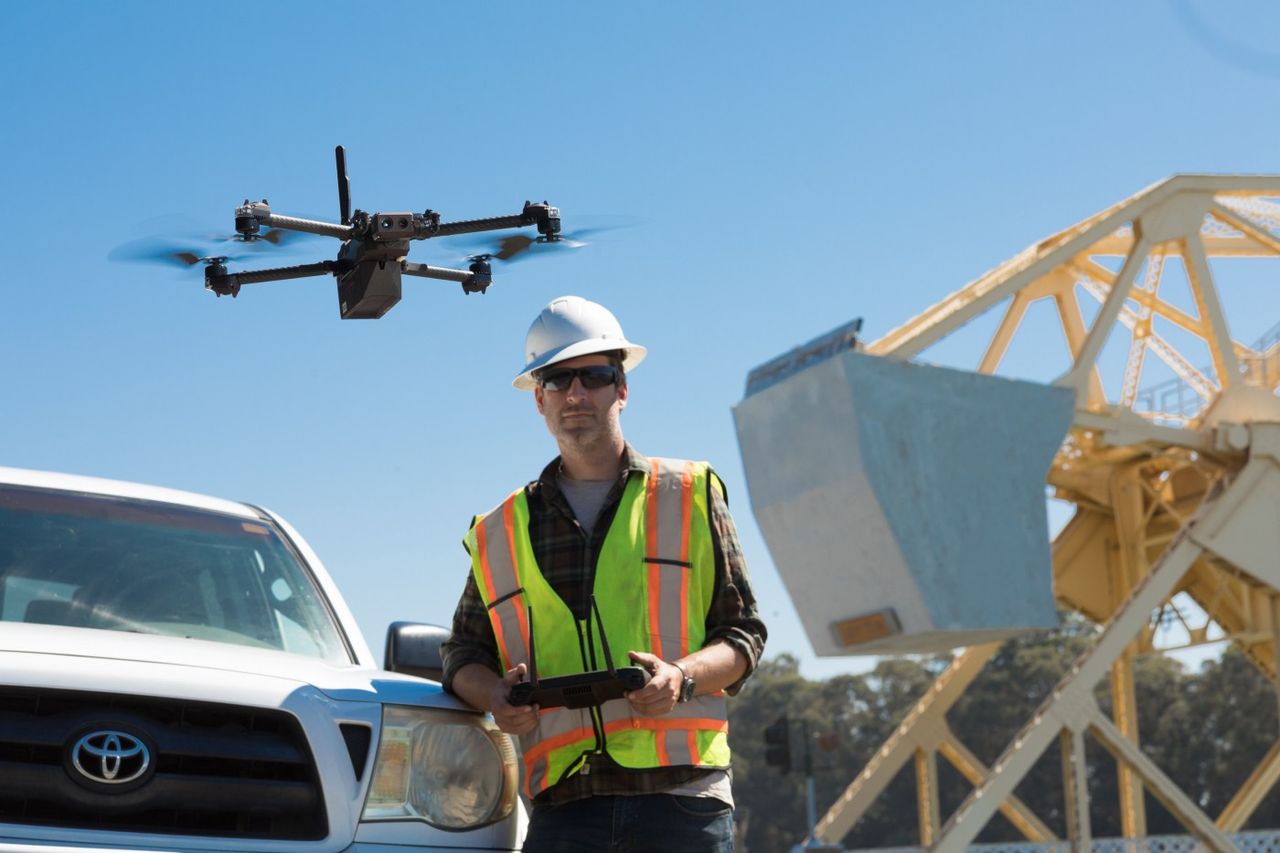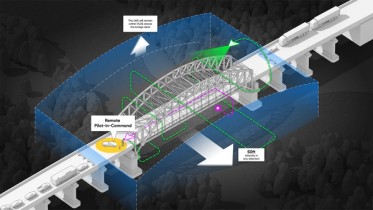We at Skydio have been thrilled and honored at the warm welcome the drone industry has shown us. From consumers and reviewers generating amazing footage, to first responders protecting their communities, to enterprise users conducting operations more safely than ever before, to working with the FAA to unlock the potential of unmanned aviation, every interaction with the drone market has underscored the incredible value of autonomy.
At the same time, for every paradigm-shifting technology, another finds itself left behind. The automobile marginalized horse breeders. Computers replaced endless reams of paper. Smartphones killed the Motorola Razr. The real winners, however, were we the consumers who can now drive, type, and tap into a world of greater potential than ever before. Unfortunately, the technology that is being left behind does not always take the side of the consumer, and can resort to spreading fear, uncertainty, and doubt (FUD) in an attempt to delay the inevitable. DJI’s reaction to this article on DroneXL by Haye Kesteloo is a textbook example. Reacting to our presentation at the DroneDeploy Conference on the ways autonomy will make enterprise drone users safer and more effective, Kesteloo’s article mistakenly paints a dystopian picture of our game-changing technology, making a number of factually incorrect statements, and concluding:
“It seems fair to say that if you are a responsible Part 107 pilot, Skydio is not your friend. This company envisions a future where drone operators are marginalized and where AI and computer-learning prevail over common sense, experience, and manual skills.”
While Kesteloo’s perspective may be the result of a misunderstanding, it was immediately retweeted by DJI, continuing a pattern of trying to instill drone pilots with fears that autonomy will threaten their jobs or standing with the FAA. These fears could not be further from the truth or more harmful to Part 107 pilots, but they are certainly what a hardware-centric monopolist selling outdated technology would want you to believe. In this blog, we will set the record straight: autonomy will help Part 107 pilots operate more effectively — and lucratively — than ever before, and it’s legal today.
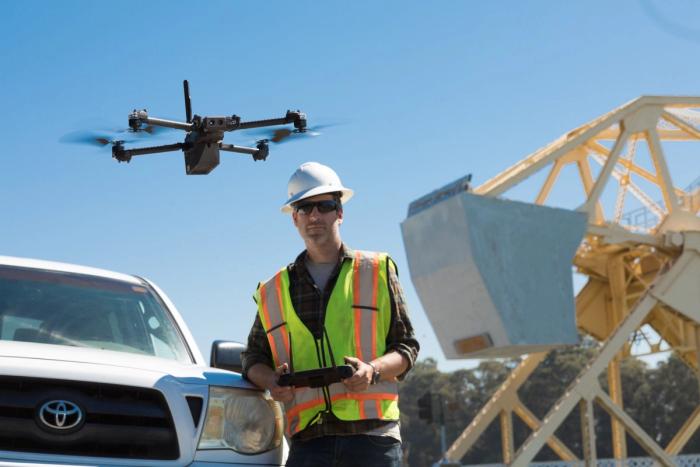
Autonomy = opportunity for Part 107 pilots
Being a Part 107 pilot is hard. We know because our enterprise and first responder customers are Part 107 certified, heck — most of us at Skydio are as well! But it doesn’t have to be so hard. As cheap manual drones have saturated the market, pilots have found themselves shackled to a hardware-centric approach that presents safety risks, limits their earning potential, and holds the industry back.
Manual drones crash, and manual drone manufacturers make that the pilot’s problem.
YouTube is littered with hours of footage of manual drones crashing. User forums for the main vendors are equally littered with stories of poor customer service, having to pay for damages, and more. The industry is full of capable and experienced commercial part 107 pilots who model common sense, experience, and manual skills, but 55% of enterprise operators still cite the fear of crashing as their top concern with their existing drone program. The fact of the matter is that when you crash a manual drone, the OEM sells you another manual drone. That costs pilots money, time, and hassle.
That’s no way to operate as a Part 107 pilot using a drone to get the job done. Skydio’s investment in autonomy is an investment in you and your operation. We work hard on obstacle avoidance to reduce the risk that you find yourself in a dangerous, expensive, and potentially career-threatening situation. We believe that drones won’t reach their society-changing potential until pilots and OEMs work together to make them safe.
Autonomy is legal today
The article contends that Skydio’s autonomy system is illegal. This sounds a lot like DJI’s fear tactics to scare manual drone customers away from the next wave of technology. The article cites the following language in the preamble to the Part 107 rule (not the rule itself) as proof that the FAA categorically prohibits autonomous flight:
“However, the remote pilot in command must retain the ability to direct the small unmanned aircraft to ensure compliance with the requirements of part 107.
Accordingly, this rule will require that the remote pilot in command have the ability to direct the small unmanned aircraft to ensure compliance with the provisions of part 107. In particular, the FAA emphasizes the requirements of §§ 107.37 and 107.39, which require the small unmanned aircraft to yield the right of way to all other users of the NAS and to avoid flying over a human being who is not directly participating in the small UAS operation and not under a covered structure.”
There is only one problem: Part 107 allows autonomous small UAS operations. The FAA could not have been more clear. The same section of the preamble to Part 107 states, in no uncertain terms, that “this rule will allow autonomous small UAS operations.” The article strangely omits this essential passage:
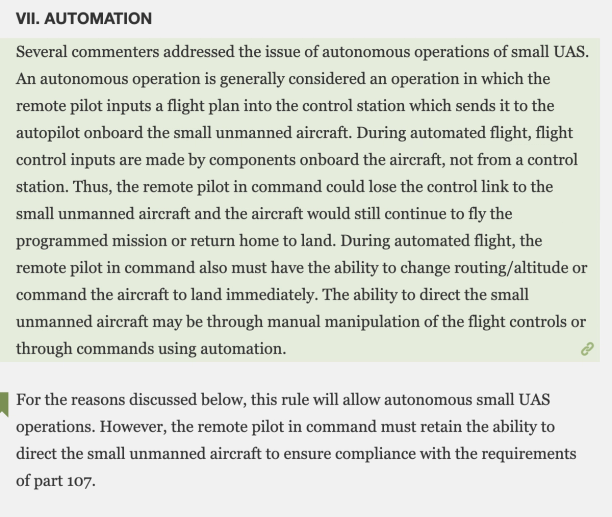
As you can see, the FAA allows for autonomous operations as long as pilots maintain “the ability to direct the small unmanned aircraft to ensure compliance with the requirements of part 107.” Further, the Advisory Circular reinforces the reality that the rule permits autonomy (see section 5.2.3), referring directly to “autonomous aircraft” operations. The circular clarifies that pilots may use a number of methods to comply with that requirement, ranging from “transmit[ting] a command for the autonomous aircraft to climb, descend, land now, proceed to a new waypoint, enter an orbit pattern, or return to home.”
Skydio makes that easy. Skydio pilots continue to be part of the loop and can always take control, redirecting our autonomous aircraft or instructing it to land. In fact, unlike with manual drones, Skydio pilots retain that ability even in GPS-degraded or denied environments, as well as in areas subject to electromagnetic interference. In that way, Skydio drones comply with applicable regulations while offering superior levels of control, even in demanding environments.
Autonomy is transformative
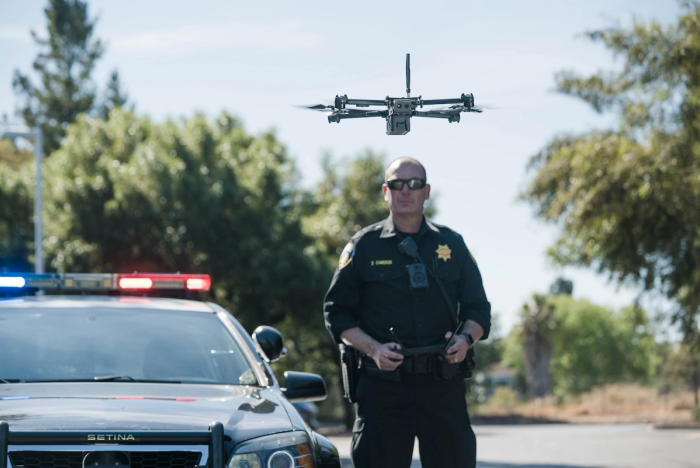
Skydio’s Autonomy technology is not only legal, it is transformative. Working closely with our customers and the FAA, Skydio has leveraged autonomy technology to help secure groundbreaking authorizations to fly autonomous drones beyond visual line of sight (BVOLS). We partnered with the Chula Vista Police Department to obtain a first-of-a-kind waiver that allowed first responders to fly drones BVLOS — without visual observers or expensive surveillance equipment (like radar). Based in part on the strength of the safety case that we developed, the FAA enabled every public safety agency to benefit from those operations, granting a nation-wide Tactical BVLOS waiver. Most recently, we partnered with the North Carolina DOT to obtain a pathbreaking waiver that allows work crews to fly Skydio drones BVLOS to inspect bridges with unparalleled safety and efficiency. The waiver applies to the entire state of North Carolina and does not require visual observers or radar — another industry first. These waivers showcase the power of autonomy in action — and the ability of autonomy to evolve regulatory frameworks. Skydio will continue to push the boundaries of unmanned flight and open new horizons for our customers, enabling Part 107 pilots to fly a greater range of missions than ever before.
Dear Part 107 pilots: Autonomy means business growth and happier customers.
While those incentivized to prop up manual drone technology will spread fear about Autonomy, the future has never been brighter for Part 107 pilots. Look at the way pilots have to fly drones today: it is a manual and painstaking process, heavily regulated by the FAA. Pilots are often required to buy ever-more-expensive sensor hardware to cover for the fact that the software onboard the drones is incapable of preventing crashes when flying close to obstacles. The days of white-knuckled flight — where Part 107 operators work hard and take on all the risk — are coming to an end.

At its core, autonomy is about democratizing access to drones by making them easier and safer to use through automation. It is a proven fact of life in tech that when this happens, technology adoption increases as more use cases can be solved, leading to new business and job growth. Like the Smartphone in telecommunications or the Cloud in IT, Autonomy marks the beginning of the next wave of growth and innovation in the drone industry.
Take Skydio HouseScan for example. Now that we have equipped drones with roof inspection autonomy software, our partner EagleView can deliver a highly differentiated inspection service that produces higher quality results in less time and with less risk for the operators. As a result, they plan to deploy thousands of drones, hiring and training Part 107 pilots at a greater rate than ever before. Why? Because autonomy makes Part 107 pilots more effective.
Stated simply, the smarter the drone, the more powerful it becomes, and the more leverage it provides the operator. Our mission is to empower more people to do more useful work with drones. If Part 107 pilots have anything to fear, it’s flying manual drones that are easy to crash and complicated to operate, while their competitors adopt autonomy. There is a better way. Autonomy enables you to complete more jobs more quickly than ever before. That is a future we should all be quick to embrace.
If you are planning to build a drone program that lasts into the age of autonomy, please contact us. We look forward to building the future together.

